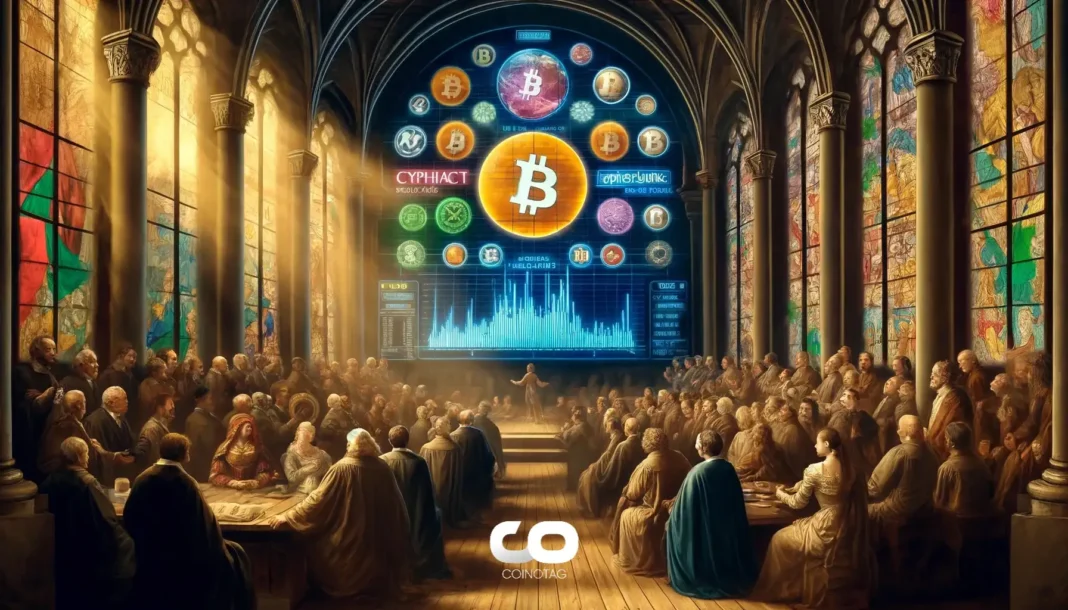The KRW stablecoin KRWQ, launched by IQ in partnership with Frax Finance, is the first South Korean won-pegged stablecoin on Coinbase’s Base network. It enables seamless cross-chain transfers via Stargate and LayerZero, targeting institutional adoption with built-in compliance features modeled after frxUSD.
-
KRWQ fills a market gap as the inaugural scalable won-denominated stablecoin, addressing the dominance of USD-pegged options in Asia.
-
It leverages multichain technology for efficient transfers across blockchains like Base, promoting broader accessibility for global users.
-
Initial trading launched on Aerodrome’s KRWQ/USDC pair, with minting restricted to institutional partners amid South Korea’s evolving regulations.
Discover the launch of KRWQ, the pioneering KRW stablecoin on Base. Explore its multichain capabilities, regulatory compliance, and impact on South Korea’s digital finance landscape. Stay ahead in crypto—read now for key insights!
What is the KRW Stablecoin KRWQ?
The KRW stablecoin KRWQ represents a groundbreaking development in decentralized finance, issued by IQ in collaboration with Frax Finance as the first stablecoin fully backed by the South Korean won and deployed on Coinbase’s Ethereum Layer 2 network, Base. This token addresses a long-standing need for localized fiat-pegged digital assets in Asia, enabling users to bridge traditional Korean currency with blockchain ecosystems. By integrating advanced compliance measures inspired by Frax’s frxUSD, KRWQ aims to attract institutional investors while facilitating secure, efficient transactions across multiple chains.
The stablecoin utilizes the Stargate bridge and LayerZero’s Omnichain Fungible Token standard, allowing seamless transfers between various blockchains without the friction of traditional intermediaries. Launched via a joint announcement on a recent Thursday, KRWQ’s debut trading pair, KRWQ/USDC, was introduced on the decentralized exchange Aerodrome, marking the start of its integration into DeFi protocols. This initiative not only diversifies the stablecoin market but also positions South Korea as a key player in the global race for fiat-backed digital currencies.
How Does KRWQ Ensure Compliance and Institutional Safeguards?
KRWQ incorporates robust compliance frameworks and institutional-grade protections, drawing directly from Frax Finance’s established frxUSD model to mitigate risks and appeal to regulated entities. These safeguards include restricted minting and redemption processes, currently limited to verified counterparties such as exchanges, market makers, and institutional partners, ensuring that only qualified participants can engage with the token. This approach is designed to align with anticipated South Korean regulations, fostering trust in an otherwise volatile crypto environment.
According to IQ’s Chief Brain, Navin Vethanayagam, “While USD-backed stablecoins dominate today, no credible won-denominated stablecoin has ever launched at scale. KRWQ fills a critical gap in the market.” Data from similar initiatives, like Frax’s ecosystem, shows that such compliance features have successfully onboarded billions in institutional capital to DeFi. The token’s multichain interoperability further enhances its utility, reducing settlement times to near-instantaneous levels across supported networks, which experts say could boost adoption rates by up to 30% in cross-border payments involving the won.
In the broader context, this launch follows Japan’s recent introduction of a digital yen backed by domestic deposits and Japanese government bonds, as reported by Cryptopolitan. Such developments underscore a global shift toward sovereign digital currencies, with KRWQ positioned as a compliant bridge for Korean users once local laws evolve. Financial analysts note that stablecoins like KRWQ could reduce reliance on USD-denominated assets, potentially stabilizing regional trade flows amid economic uncertainties.
Frequently Asked Questions
Is the KRW Stablecoin KRWQ Available to South Korean Residents?
Currently, KRWQ is not marketed or offered directly to South Korean residents due to the absence of specific regulatory frameworks governing stablecoins in the country. Minting and redemption are restricted to eligible institutional counterparties, including exchanges and market makers. IQ and Frax Finance emphasize that the stablecoin is built in anticipation of upcoming legislation from the National Assembly, which could enable broader access in the near future.
What Blockchains Support the KRW Stablecoin and How Does It Transfer Across Them?
The KRW stablecoin KRWQ is initially live on Base and extends support to other blockchains through its multichain architecture. It uses the Stargate bridge powered by LayerZero’s Omnichain Fungible Token standard, allowing users to transfer the token effortlessly between networks like Ethereum and beyond. This setup ensures liquidity and minimizes gas fees, making it ideal for everyday DeFi activities and international remittances tied to the South Korean won.
Key Takeaways
- Market Innovation: KRWQ pioneers a scalable won-pegged stablecoin, challenging USD dominance and opening doors for Asian fiat integration in DeFi.
- Regulatory Readiness: Built with compliance from Frax’s playbook, it limits access to institutions, preparing for South Korea’s stablecoin laws under the Foreign Exchange Transactions Act.
- Global Implications: As Tether CEO Paolo Ardoino noted, the Korean won could become vital for tech trades—users should monitor legislative progress for investment opportunities.
Conclusion
The introduction of the KRW stablecoin KRWQ by IQ and Frax Finance marks a pivotal step toward diversifying the stablecoin ecosystem with a focus on the South Korean won, addressing regulatory gaps and institutional demands in one of Asia’s largest economies. As South Korea advances its stablecoin legislation—potentially classifying them as legal means of payment under amendments to the Foreign Exchange Transactions Act—this token could catalyze broader adoption, reducing dependence on USD-pegged alternatives like Tether. With flows between Korean exchanges and platforms reaching 12.8 billion won last year, the need for localized options is clear, and KRWQ’s multichain design positions it for seamless global use. Investors and institutions are encouraged to track developments from the Financial Services Commission, as forthcoming laws may unlock new avenues for digital finance innovation and monetary sovereignty in 2025 and beyond.





